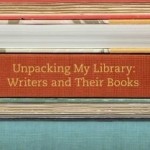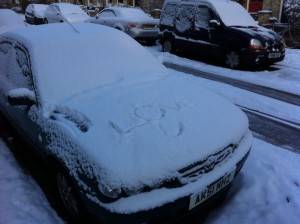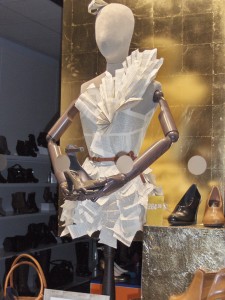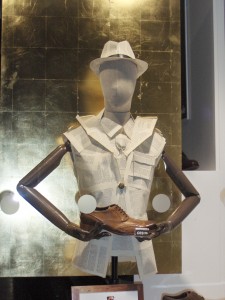 There’s a new treat for book-fetishists everywhere, with the publication of the second volume in Yale’s Unpacking my Library series, this one edited by Leah Price and entitled ‘Writers and their Books’. Here Price conducts a series of interviews with many different kinds of reader-writer, asking about their collecting habits, the ecology of their buying and lending and merging and discarding, the geography of their reading (what books are lurking by the bed or piled in the kitchen?), and their theories about the future of the book. But the real meat of the volume lies in its extraordinary photographs, mostly photographs of bookshelves and the spines of books. Battered spines, shiny spines, spines neatly lined up in order or collapsing on a diagonal, spines asserting unities of genre or date or subject-matter, spines at cross-purposes (since publishers have never reached any agreement about which way the words should run). Then there are photos of the living-rooms and writing-rooms in which all these books live, to give you a sense of what our modern St Jeromes have in their studies.
There’s a new treat for book-fetishists everywhere, with the publication of the second volume in Yale’s Unpacking my Library series, this one edited by Leah Price and entitled ‘Writers and their Books’. Here Price conducts a series of interviews with many different kinds of reader-writer, asking about their collecting habits, the ecology of their buying and lending and merging and discarding, the geography of their reading (what books are lurking by the bed or piled in the kitchen?), and their theories about the future of the book. But the real meat of the volume lies in its extraordinary photographs, mostly photographs of bookshelves and the spines of books. Battered spines, shiny spines, spines neatly lined up in order or collapsing on a diagonal, spines asserting unities of genre or date or subject-matter, spines at cross-purposes (since publishers have never reached any agreement about which way the words should run). Then there are photos of the living-rooms and writing-rooms in which all these books live, to give you a sense of what our modern St Jeromes have in their studies.
One contributor, Lev Grossman, offers a kind of manifesto for the volume, declaring: ‘When you look around somebody’s personal library, you can actually see, physically instantiated as objects, a map of that person’s interests and preoccupations and memories’. There’s a Desert-Island Discs quality to the book, as contributors are invited to pick out their ten favourite volumes; here even a determined non-fetishist like Steven Pinker (‘I do love the contents of books, of course’) risks having his values upended as the ostentation of dust-jackets reminds us how powerfully ideas are bound in to the energies of past times and places. Much of the pleasure of this project is the painful pleasure of evanescence. The collector is at once present and absent in his or her books; the immortal text can only be propagated by a succession of rapidly dating material forms; the past in which these collections came together awaits the future in which they will split apart. ‘I’m so aware of my age’, says Edmund White at 71, ‘I see books as a problem that I might end up imposing on my heirs’.
All of the contributors are asked about their attitude to the e-book, and in the process some interesting anthropomorphisms surface. Rebecca Goldstein puts it philosophically: ‘Kant tells us that a person can never be used as a means to an end, but must be viewed as an end in itself … Well, that pretty much summarizes my attitude towards books. I would never use a book as a coaster or to prop up something else … Well, maybe a phone book, but not a book that was authored, into which some suffering writer … poured her heart and soul’. Claire Messud sees love of the physical book as a kind of shorthand for being fully alive: ‘Anybody who thinks books are dispensable is someone entirely lacking in appreciation of sensual pleasure. I pity such a person’. And Jonathan Lethem goes still further in his account of the erotics of the unread book: ”For me, there’s a lovely mystery and pregnancy about a book that hasn’t given itself over to you yet–sometimes I’m the most inspired by imagining what the contents of an unread book might be.’ Milton’s claim that books contain a ‘potencie of life’ resonates in these passionate anatomies of bibliophilia.
For historians of reading, there is much food for thought here. Sophie Gee connects the problematic physicality of the book to its cultural significance: ‘Books are hard to transport and therefore signs of permanence’. This offers meat to those who see the weightless, digitized word as the irresponsible parent of a throwaway, twittering textuality, but it perhaps overlooks the way that print too facilitated ephemerality. Elsewhere, James Wood reflects on the fact that, as well as annotating his books, ‘I also regularly write to-do lists in the endpapers, or telephone numbers, or names of people I must e-mail. These latter often prove more interesting than any of my literary comments: years later, I stare at them, trying to work out who these people were’. Is that distraction from interpretation a good or a bad thing, or does it speak to some deeper mystery concerning the relationship between reading and its horizons? Finally, while some of these writers have teddy-bears and toy-cars on their shelves, I was struck by another moment in Rebecca Goldstein’s interview, when she recalled that: ‘There was a time when we had some vases and candlesticks mixed in with the books, but I didn’t like that at all. It seemed to me to qualify as what philosophers call a “category mistake”.’ Although she again puts it in rather intellectual terms, it seems to me that the point she makes is more importantly bodily. Like any kind of collecting, books present a problem of order and organization, and the way that one handles that problem is liable to be felt on the skin, in a shiver of discontent or a warm glow of satisfaction. In this sense, to unpack your library is indeed to unpack yourself.


